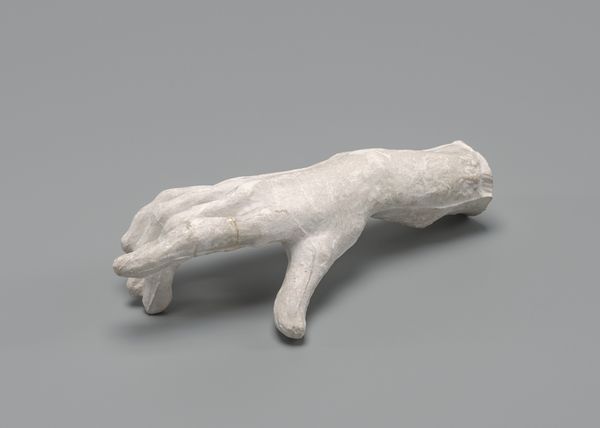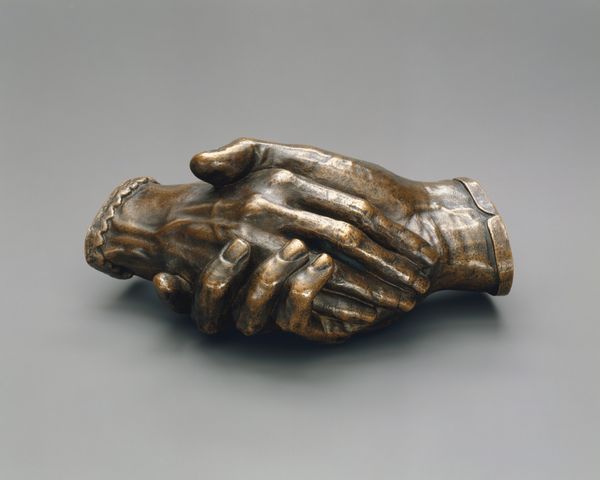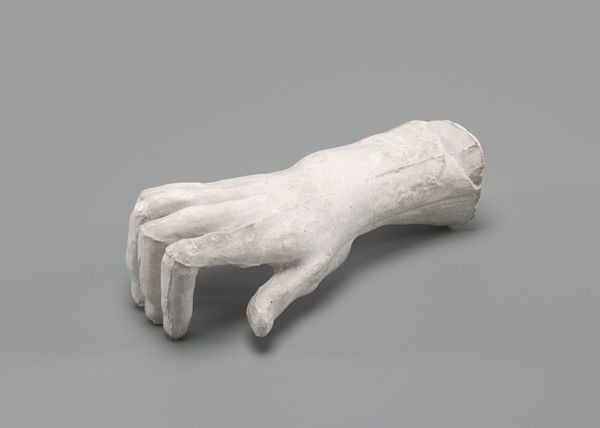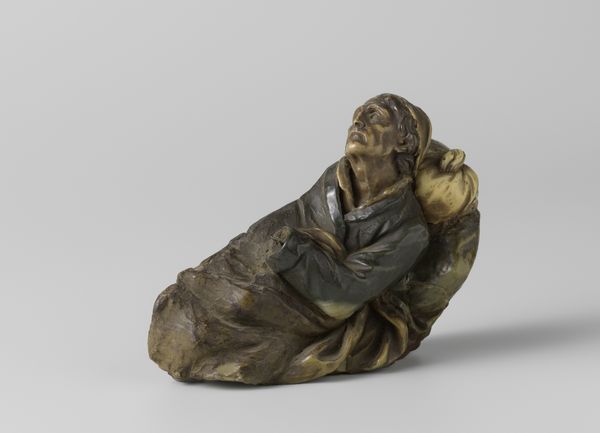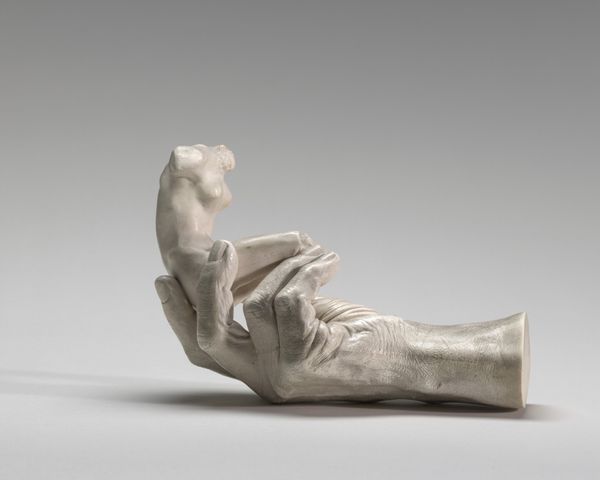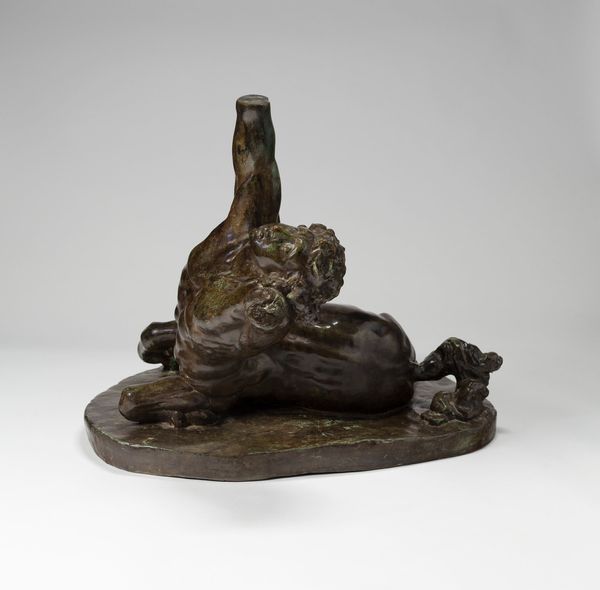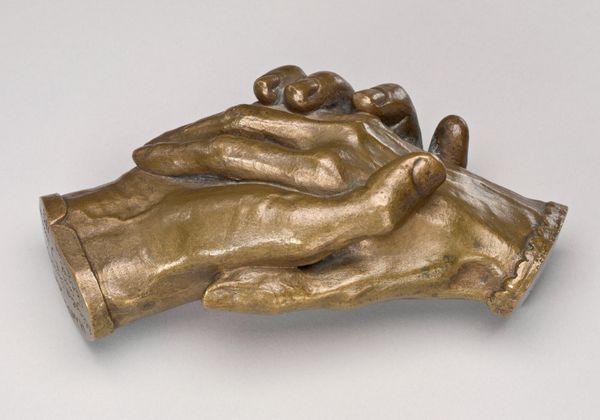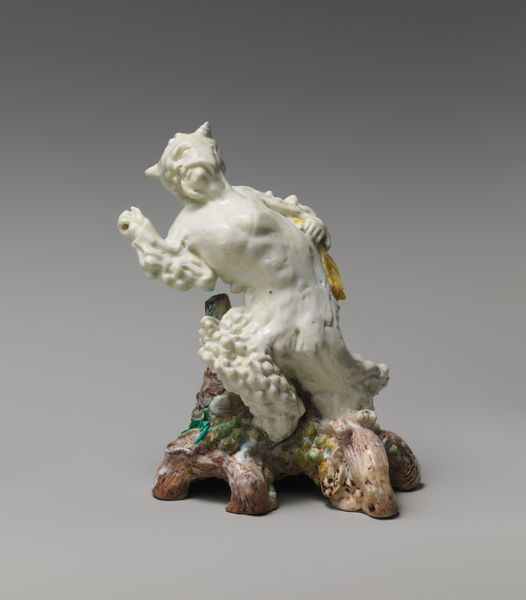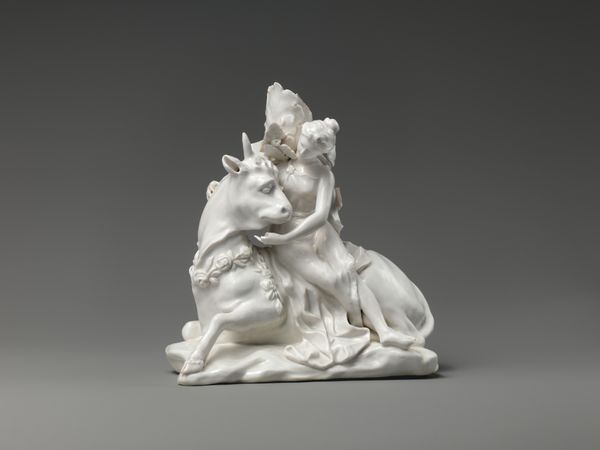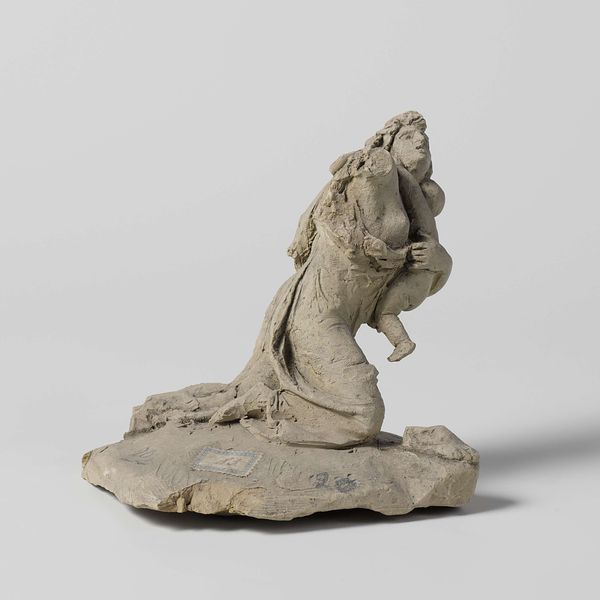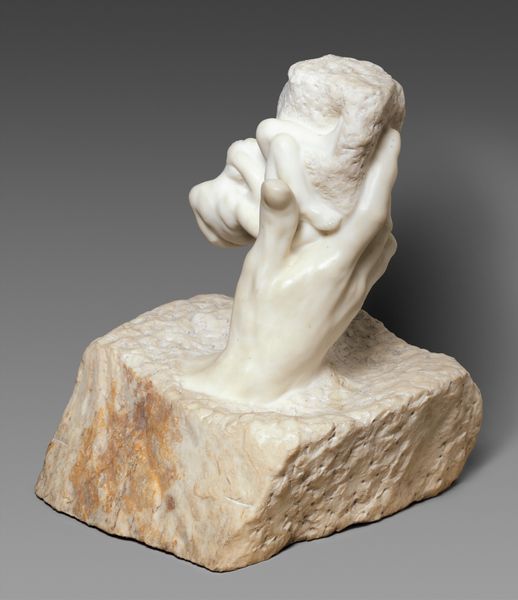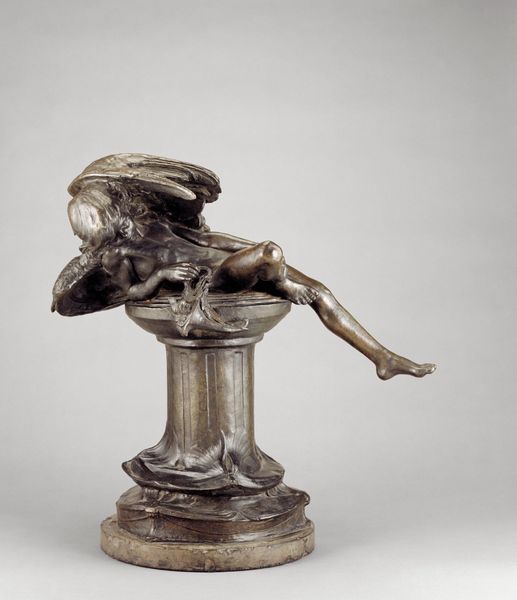
sculpture
#
3d sculpting
#
sculpture
#
charcoal drawing
#
sculptural image
#
unrealistic statue
#
sculpting
#
underpainting
#
sculpture
#
charcoal
#
graphite
#
statue
Dimensions: overall: 8.89 × 26.04 × 19.05 cm (3 1/2 × 10 1/4 × 7 1/2 in.)
Copyright: National Gallery of Art: CC0 1.0
Curator: There’s a quiet, almost unnerving stillness radiating from this piece. The alabaster hands clasped over what appears to be a bundle of scrolls… they speak volumes without a single word. It makes me think about repressed desires, about something held back, perhaps tragically so. Editor: That's interesting. Let me provide some context. What you’re observing is a sculpture dating back to 1852 by the Italian artist Pietro Tenerani, entitled "Hand of Pietro Tenerani." It's a poignant example of 19th-century Neoclassical sculpture. Curator: Neoclassical alright! So composed, so studied. The gesture is simple, almost formal, but there is some sense of sadness within the lines of each finger, the angle of the wrists. Do you feel that, too? A melancholic tension? It is mounted on that deep red-brown veined marble...blood and purity juxtaposed. Editor: Absolutely, but let’s also consider the social conditions and artistic movements of the time. The 19th century, with its emphasis on reason and order, often presented emotions in this subdued way. Sculpture, particularly, served to monumentalize certain values but also reflected the power structures inherent in patronage. Consider that these idealized representations served political as well as aesthetic functions. What sort of status do you need to have your very own hands immortalized? Curator: Oh, certainly! One has to acknowledge that level of privileged representation and access to skilled artisans like Tenerani. And that it survives today, speaking silently of its past, reminding us of the socio-political contexts in which it emerged... Still, as an artwork it evokes something primal within us: connection through touch yet a severance from vitality! The hands tell their own tale! I want to take them into mine. Editor: Indeed, art provides a portal. Whether contemplating artistic movements, social histories, or emotional responses it opens dialogues across time. In this instance, the sculpture not only commemorates but invites questioning the artifice and reality it signifies, wouldn’t you agree? Curator: Agreed! An artwork’s capacity to hold within it these swirling forces – personal, aesthetic, socio-historical – THAT is what keeps it vibrantly, resonantly alive. Thanks to Tenarani for a place of intersection, for conversation and discovery!
Comments
No comments
Be the first to comment and join the conversation on the ultimate creative platform.
